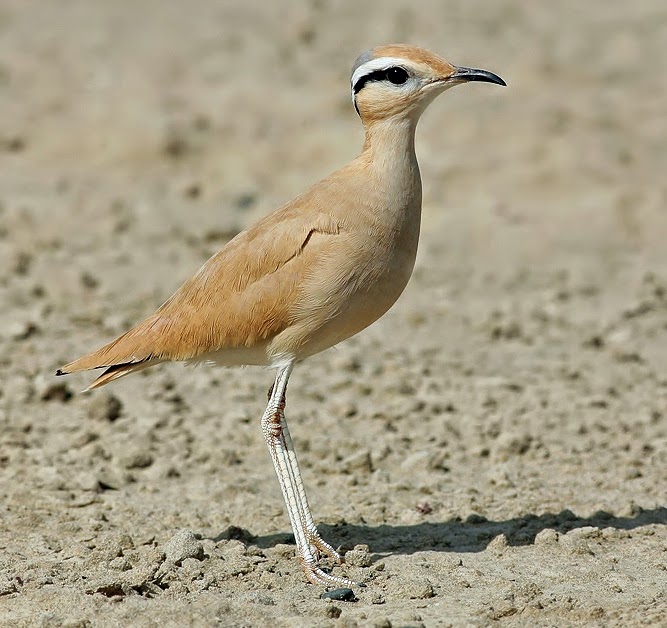 |
| Photo by Christodoulos Makris (Trek Nature) |
Common name:
cream-coloured courser (en); corredor (pt); courvite isabelle (fr); corredor (es); rennvogel (de)
Taxonomy:
Order Charadriiformes
Family Glareolidae
Range:
This species is found around the Sahara desert, along the Mediterranean coast Africa, in Morocco and Mauritania and in some areas of the Sahel such as Mali and Sudan. Also in parts of the Canary islands and Cape Verde, and, through the Middle East, into Iran, Turkmenistan, Afghanistan, Pakistan and marginally into north-western India.
Size:
These birds are 19-24 cm long and have a wingspan of 51-57 cm. They weigh 93-156 g.
Habitat:The cream-coloured courser is found in arid, open, stony or sandy desert and semi-desert, including dry grassland and scrubland, gravel plains, gravel roads, salt flats and dune troughs. They occur from sea level up to an altitude of 800 m.
Diet:They feed mainly on adult and larval insects, including beetles, grasshopper, ants and flies, but also other invertebrates such as molluscs, spiders and isopods, and seeds.
Breeding:
Cream-coloured coursers breed in February-July. The nest is a shallow, unlined scrape on bare ground, where the female lays 2 whitish eggs with dark brown spots and mottles. The eggs are incubated by both parents for 18-19 days. The chicks leave the nest soon after hatching, but remain with their parents until fledging, about 30 days after hatching. They reach sexual maturity at 1 year of age.
Conservation:
IUCN status – LC (Least Concern)
This species has a very large breeding range. The global population size is unknown due to recent taxonomic splits, but the overall population trend is stable, despite some populations having unknown trends.







